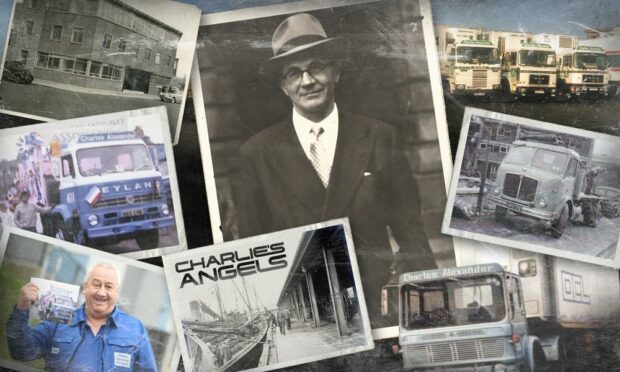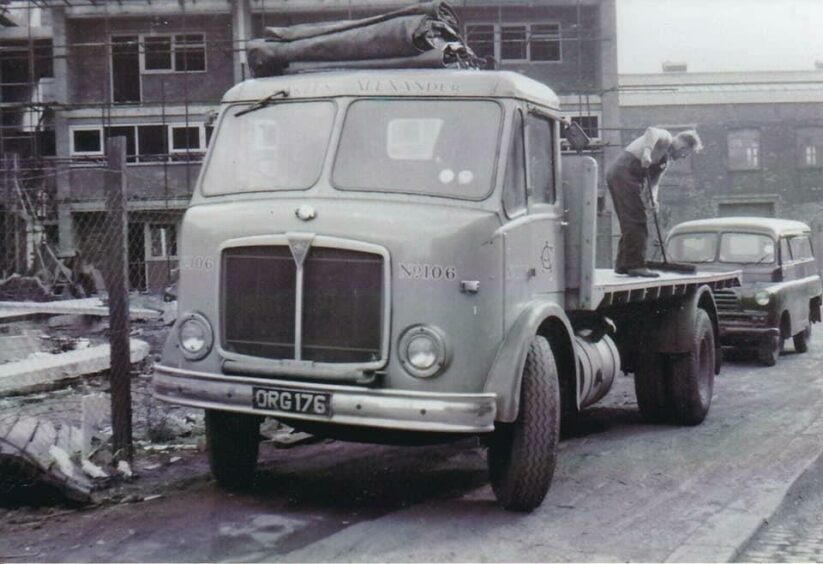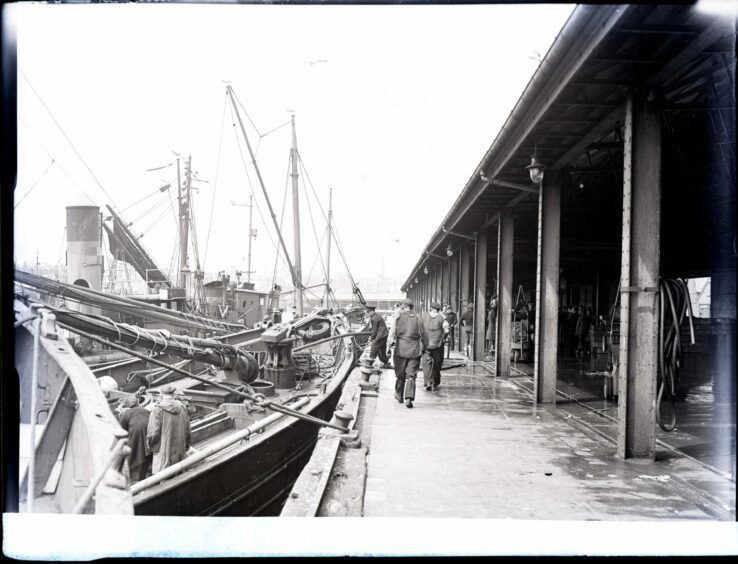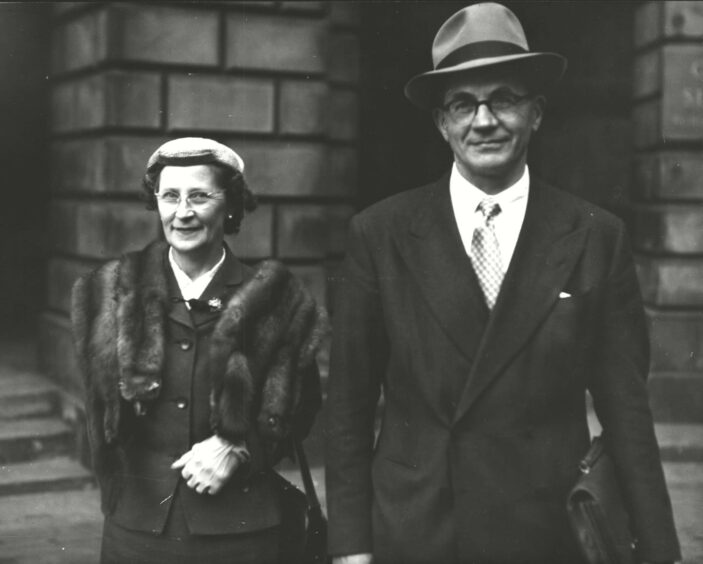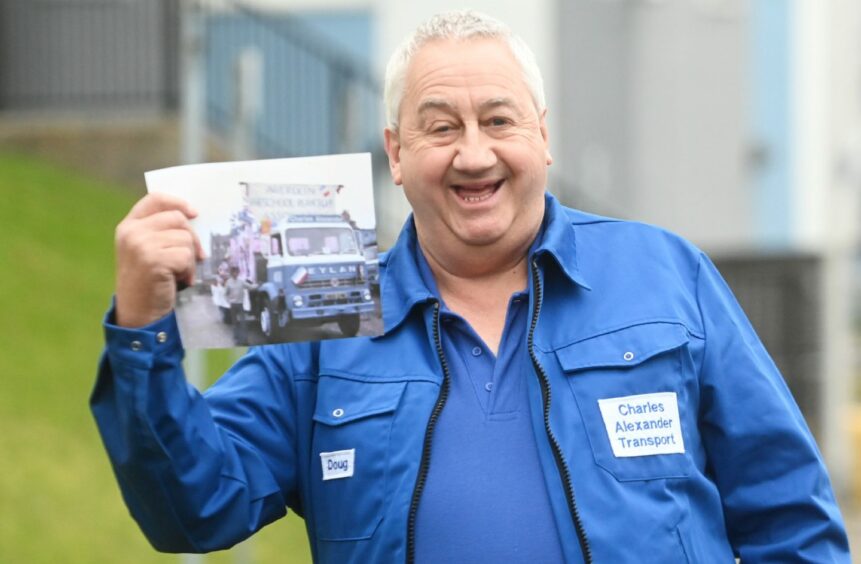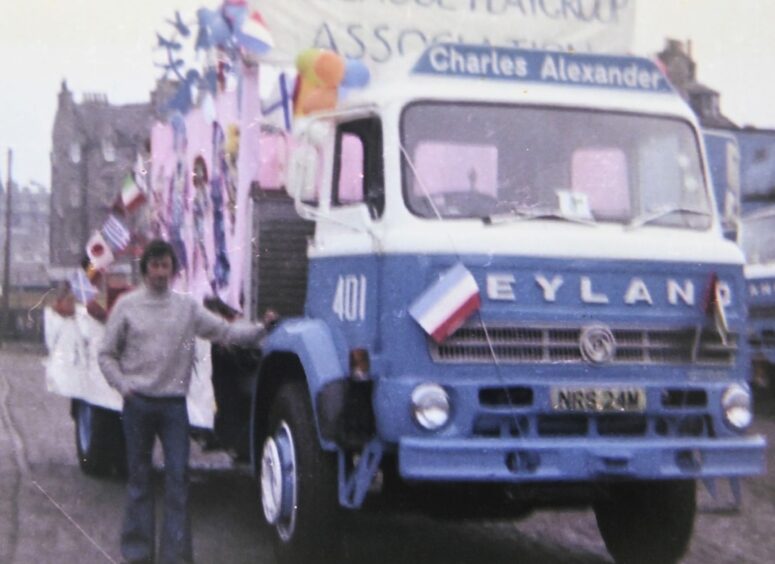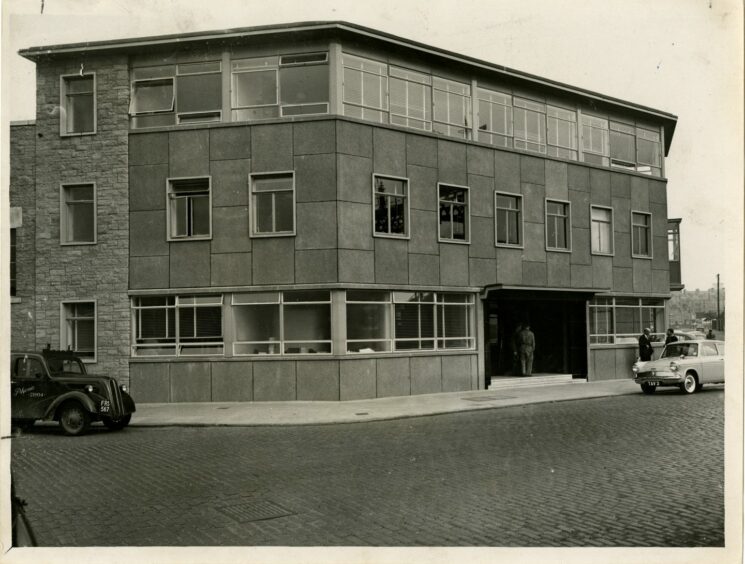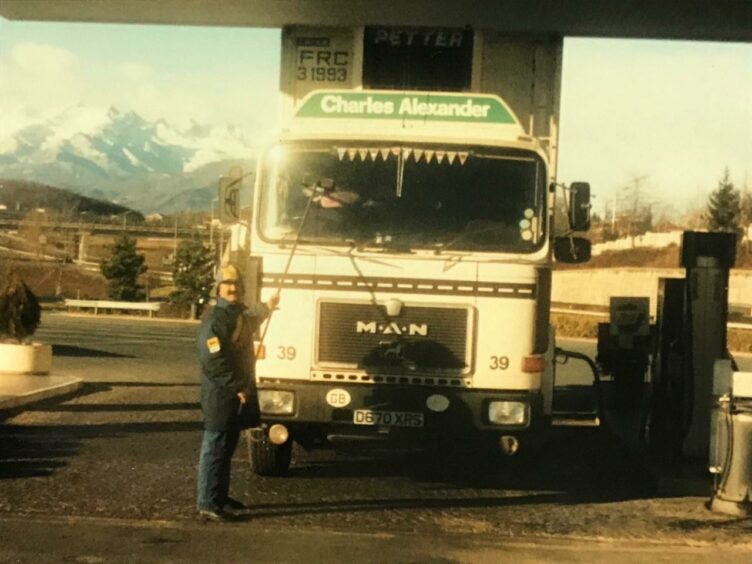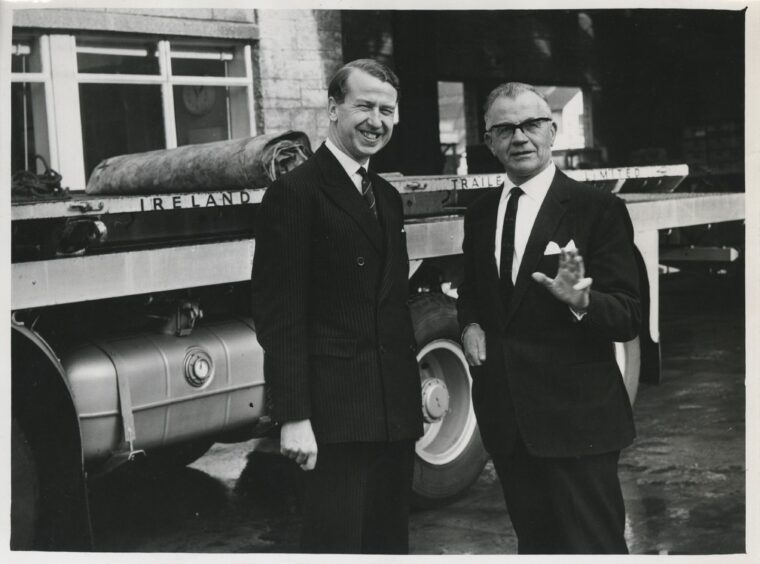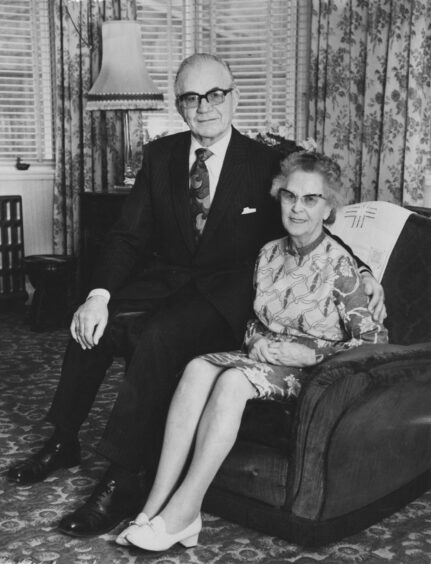More than six decades trucking Britain’s roads — and a legacy of fierce loyalty and camaraderie which refuses to die.
Known by their CB handle of ‘Charlie’s Angels’ many of the men who drove lorries for Charles Alexander and Partners of Aberdeen count those days as the best of their lives.
You could set your clock by the convoys of Charlies lorries as the ‘fish run’ set off from Aberdeen to travel through the villages of Angus and Perthshire and onwards to make the London markets by 3 or 4am.
The transport company was the vision of a young Charles Alexander in 1926.
He came from Foveran, raised on a croft and started out as a farm servant,
But he decided when he left school in Pitmedden, Udny, at 13 that he never wanted to be as poor as his parents.
At 18, he took a half share in a horse-drawn vehicle with another young lad.
With pioneering spirit, he soon bought him out as he realised the future was in road haulage by motor.
Lucrative north-east fish market
The Aberdeen fish market was huge and lucrative, and Charles started offering a service to Liverpool, Manchester and Birmingham, and finally to Billingsgate, London’s fish market.
By the early ’40s, he had taken over competing firms, had 68 lorries on the road, one of the biggest in Britain at the time.
He was also ever mindful of his civic and charitable duties.
In a 1941 report, the P&J said: “His great ability as an organiser and his practical knowledge of transport have made him an invaluable member of organisations connected with the war effort.”
In 1949, the business, now boasting 121 vehicles, was taken over by British Road Services, but Charlie came back in 1954 with Charles Alexander and Partners running a 24-hour business based at Old Ford Road and Rodgers Walk in Aberdeen.
Outrunning the railways
Competing against the railways was tough, and Charles, self-educated and representing himself, was constantly involved in legal wrangles with the Aberdeen merchants’ association, the railways and the regulatory authorities.
But every year the road network was improving, while the railways stagnated.
A ‘trunking’ system was put in place to stage the trips and rest the drivers.
The fish trunks were followed by a dry goods ‘chaser’ so that if any of the fish units broke down the chaser could drop his trailer and pick up the fish to ensure delivery.
By the late Fifties, road was winning the fish run battle, and Charlies was expanding into general freight and agricultural deliveries.
Rodger’s Walk was Doug McConochie’s base for years, working on both the agricultural and fish side between 1976 and 1985.
He enjoyed his job so much he decided to have a new Charlies uniform made for a Rodgers Walk reunion.
“I was a local carrier to Huntly and Keith, and after they got a depot in Elgin, I got Peterhead and Fraserburgh.
“Delivering between country and fishing were two totally different classes of people.
“You could have a good laugh with the country folk over a cup of tea, but once you went to the Broch, especially Fraserburgh you had to watch your Ps and Qs, they didn’t like swearing or anything.”
Doug, now 70, added darkly: “But let me tell you they were dubious people, aye telling us the delivery was short or trying to make me take on loads of fish when I was dry goods.”
Come rain or snow, Doug and his six-wheeler had to fulfil thirty or forty deliveries a day, with dry goods from flour and cloth, to spare parts for ploughs, not to mention filling up for a load back.
“It was a busy time, I liked it,” Doug said. “Apart from the weather that is.”
Inevitable accidents
Inevitably with hundreds of lorries on the road, there were accidents, most minor, some more dramatic.
In 1955, a long suffering Laurencekirk resident suffered a third lorry in nine weeks crashing into her house.
This time it was a Charles Alexander lorry carrying fish.
The Courier reported: “‘When the kitchen door burst open and bricks flew in I didn’t have to wonder what had happened,’ said Mrs Mary Kirkland of Northwater Bridge last night.
“She was in the kitchen of her house at the south end of the bridge on the main Laurencekirk-Brechin road when the third lorry in nine weeks crashed into the house.
“Five weeks ago a lorry with load of timber hit the wall and filled her sitting-room with debris.
“Builders had almost finished repairing the wall last night.
“Five minutes after they left a lorry with a load of fish mounted the new six inch kerb, burst through the protecting boards and knocked down the wall again.
“The hole, approximately four feet wide, is twice as big as the last one. ‘I suppose I am a bit lucky, as there was no furniture in the room, which was filled with several hundredweights of material,’ said Mrs Kirkland.”
Thrilled but scared
Adrian Harcus remembers how thrilled but scared he was when he started as a night shift shunter at the yard in 1972, with a freshly minted Class 1 licence.
“I was over the moon that I was in the door, but when I was speaking to some of the drivers that used to come to my local, the Cammachmore, I was thinking, this is out of my league!”
But the yard’s legendary camaraderie kicked in and Adrian was put under the wing of old hand Sandy Leslie.
“I was to take all the six wheelers that came home that night up to the Rodgers Walk workshops after refuelling them.
“After that, hooking up trailers for the day shift, bringing vehicles back from the shops etc.
“It was a nightmare at first, I had never been around so many different vehicles before, I found myself running to Sandy for help a lot.
“I don’t think I will ever forget my early learning days.”
Adrian stayed with the company right to the end, in 1992.
The continental run
In 1983 Charlies decided to export to the continent, eventually employing 25 drivers in what turned out to be the most profitable part of the company.
Scott Dunbar loved his time with Charlies on the ‘continental’ in the 1980s.
He said: “We were away for six weeks at a time for the first few years. Most of the work was fairly mundane fish out to Boulogne then reload from Belgium or Holland.
“I also did quite a lot of Paris and Orleans, reloading wine from the Loire valley to the UK. We went to Spain a fair bit, and also Germany.
“It was a brilliant job for a young lad.”
Employee loyalty
The number of father and son pairs at the company is testament to the loyalty felt by its workers towards Charlies.
Scott said: “Many people were there for twenty or thirty years, quite a few for a good deal longer than that.
“That doesn’t happen if it isn’t a good place to work.
“Charlies was not so much a workplaces as a tradition, it was a privilege to work there.
“The very fact that so many of us are still friends thirty some years later speaks volumes.”
Rob Walker was with Charlies for 33 years from 1959, on the fish run to Kendal, and later Preston, working 11 hours a day, often seven days a week.
His mechanical skills saw him travelling at the back of his convoy, ready to leap into action if there was a breakdown.
“We all looked after each other,” he said.
“Charles Alexander was a nice boss, a real gentleman and fair.
“He would say, I don’t bother how you get there as long as you get the fish to market.
“There were never any arguments or complaints, if you had a problem the office sorted it out.”
Charlies closure ‘a sad day’
Charlies closed in December 1991. That day Rob had to lock up all the smaller lorries in the Preston depot and bring the keys home.
When he got back to the Charles Alexander Aberdeen depot everyone had gone.
“It was the saddest day of my life,” he said.
Times had moved on.
The fish trade had changed with supermarkets controlling their own supply chains.
The trunk system was by now clunky and expensive to operate as single trucks and single drivers could do the same job quite easily.
The continental division was doing well, but not well enough to support the company’s other challenges.
You might enjoy:
Trip back in time: Did you journey aboard the British Rail TV Train?
